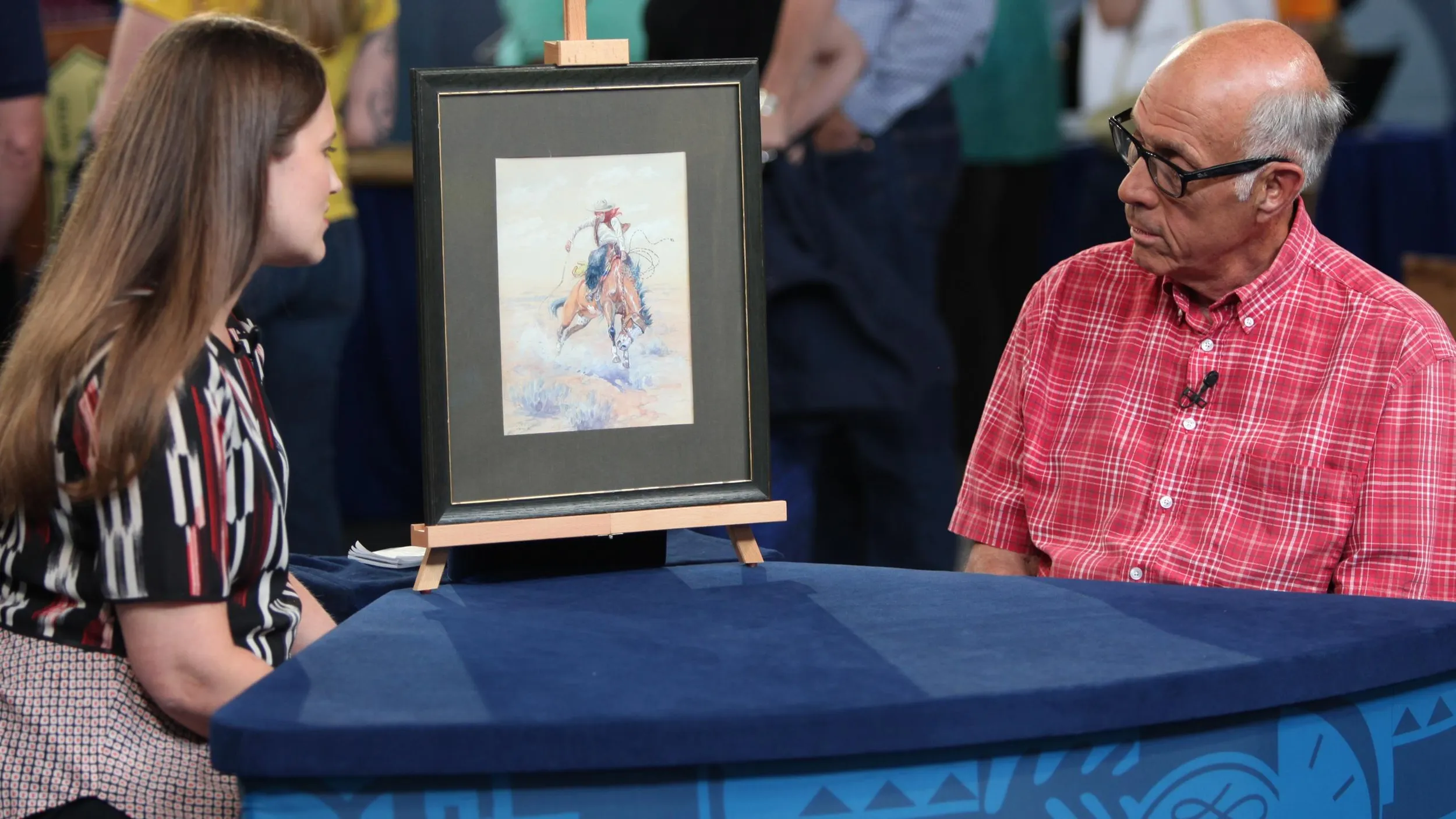GUEST: This belonged to my mother. She was born in Long Island, and her father bought it for her mother in San Francisco, I'm assuming late '24, 1925. And she's had it ever since, and I've had it in my home for about the last ten or 15 years, and we've always sort of wondered, you know, the story about it. All I know is it's, uh, Royal Copenhagen, and my mother's born in 1924, so I'm assuming, you know, sometime prior to that, it was built, designed, whatever. And that's pretty much all I know about it.
APPRAISER: Okay. Now, it is a piece of Royal Copenhagen, you're absolutely right, from Denmark, and it's a great, massive size, but there's something really special and spectacular about this particular Royal Copenhagen vase besides the size, and that is the sterling silver mounts on both the top and the bottom, which is very unusual. I've seen very, very few pieces ever that were mounted.
GUEST: Okay.
APPRAISER: And it's got a wonderful scene on it. There's a sailing ship, of course, in a harbor, and if we research it, we can probably research these buildings. And we can also take a look at the marks on the bottom, which are very interesting.
GUEST: Alright.
APPRAISER: Now, Royal Copenhagen was founded in 1775, so it's been around for a very long time. The signature mark of the company is the three wavy blue lines right in the center, so it does have that. And then it says "Royal Copenhagen" with a crown. Then there are some green numbers. One number is most likely the shape number, and the other may be a pattern number, something like that, but they're internal factory numbers.
GUEST: Alright.
APPRAISER: And then the other blue mark is the decorator initials, and with some research, we might could figure out who that is.
GUEST: All right.
APPRAISER: There is one additional mark on the bottom, which you probably didn't notice. There is a deep scratch mark right through the blue wavy lines, and that indicates that it was a factory second, that there is something wrong with it, imperfect, and it was marked that way at the factory to indicate it was a second.
GUEST: All right.
APPRAISER: Let's set it back up. Honestly, at the table, we were absolutely astonished that it was a second. Something this big and this expensive, with sterling mounts, a factory second is unheard of. But I'm sure it was so expensive to produce when it was made, they just didn't want to scrap it and start over. They went ahead and went forward with it because something this big would have been immensely expensive when it was made. Now, by the marks, I can tell that it was made no later than 1923. Now normally, on most Royal Copenhagen-- and most pieces are not worth all that much-- a second mark will destroy the value. But on something this important, it affects it, but not as much. So my guess is that a retail insurance value for this would fall somewhere between $3,000 and $5,000.
GUEST: Oh, okay.
APPRAISER: I would have to say that this is perhaps the best piece of Royal Copenhagen porcelain we've ever seen in 20 years at the pottery and porcelain table at the Roadshow.
GUEST: Oh wow, that's very nice.








